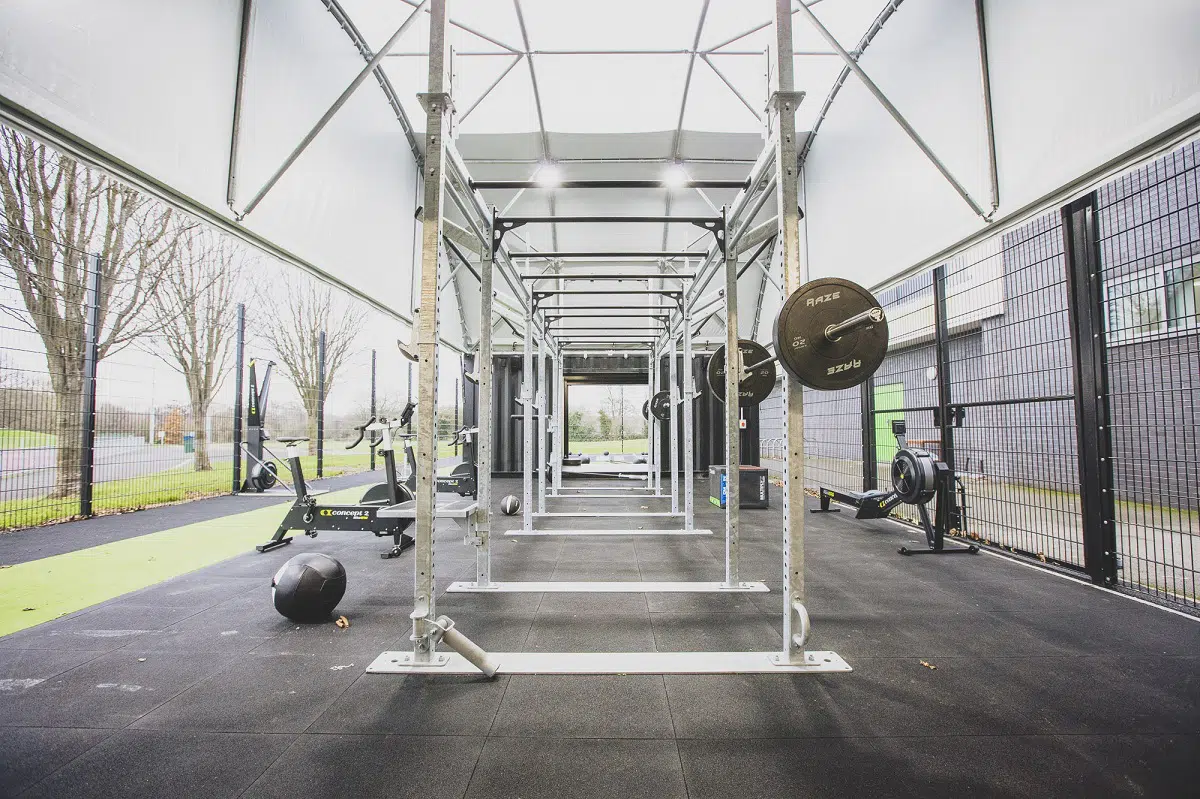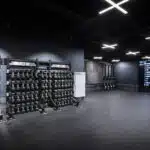What gym design trends for 2022 are on the horizon? Let’s take a look our predictions.
We’ve said goodbye to December and hello to a spike in memberships at gyms across the world.
And while everyday gym enthusiasts jump straight back into routine, you now have the opportunity to connect with your new audience through your training space. Have you already started experimenting with your gym design during lockdown? Or is now the time to start thinking about changes. The gym is evolving.
So, what’s on the horizon for 2022? From the continued rise in outdoor training spaces to an increase in tech integration, we’re sharing the best gym design trends to pay attention to this year.
1. Dedicated Pod Based Training
Many people going back to the gym will want a clean, dedicated training area. Whether it’s a rack with storage that contains a range of accessories and attachments that allows a full training session to take place. Or a complete storage pod that incorporates a touch screen that delivers digital training. These options are all possible to create a more effective and engaging training space. The ability to incorporate selectorised stack into racks and storage means that a training individual really can carry out their entire session without having to move away from the single pod.
2. Be Smarter With Your Space
It has long been a tradition in the UK that racks are perimeter/wall based, keeping the central floor space clear for other smaller items or open multi-functional areas. With the rack functionality now available, it’s time to change the space and use the racks as training hubs for the whole session. As they have been doing in the US for some time. Configuration options and functionality available can now make central back-to-back racks a more efficient use of space. However, should more flexible and open floor space be required, our racks can be designed to reduce their depth, maximizing floor space and still retaining a huge amount of functionality. Space is at a premium and this allows for expansion without the massive outlay of building a permanent structure.
3. Tech Integration Takes Over
We are living in digital times. The gym goer and athlete are constantly getting feedback from their smart watch or phone and will begin to expect the same level of feedback from their training sessions. Tech such as VBT (Velocity based training) and other reporting tools will provide a truly digital training environment, allowing for greater critique, accuracy in training, engagement, and competition. The level to which these are integrated into the training space will increase their effectiveness and the acceptance and uptake from the end users. Over lock down gym users have also become used to training through a screen whether that’s YouTube videos or on a Peloton. Touch screens with on demand training sessions on the gym floor will bridge the gap between at home training and the gym.
4. Attachments Attachments Attachments
It’s no longer enough for a rack to just be a rack, or a rig to just be a run of monkey bars. It’s all about maximizing every single inch of gym floor space with a range of attachments. Clever attachments such as single leg/Nordic attachments for rigs, or prone row attachments for racks, can allow gym owners to customise their equipment to fit their needs. Ticking off every movement pattern required in a far smaller space and adding more value to their trainers.
5. The Outdoor Training Space Will Thrive
Recent events have seen a huge increase in awareness of the importance of getting outside and exercising outdoors. People feel more confident to train in the great outdoors, and although bootcamps have been around for years, outdoor training is progressing. Introducing containers and sheltered lit training areas. Allowing for training outside 365 days a year. These improved training spaces, are a huge selling point for operators and remove the barriers previously associated with outdoor training, increasing engagement, and can create a real community and hub. Space is also at a premium so this option allows for expansion without the massive outlay of building a permanent structure.
Get in touch to discuss how Indigo Fitness can include these design ideas in your training space.








